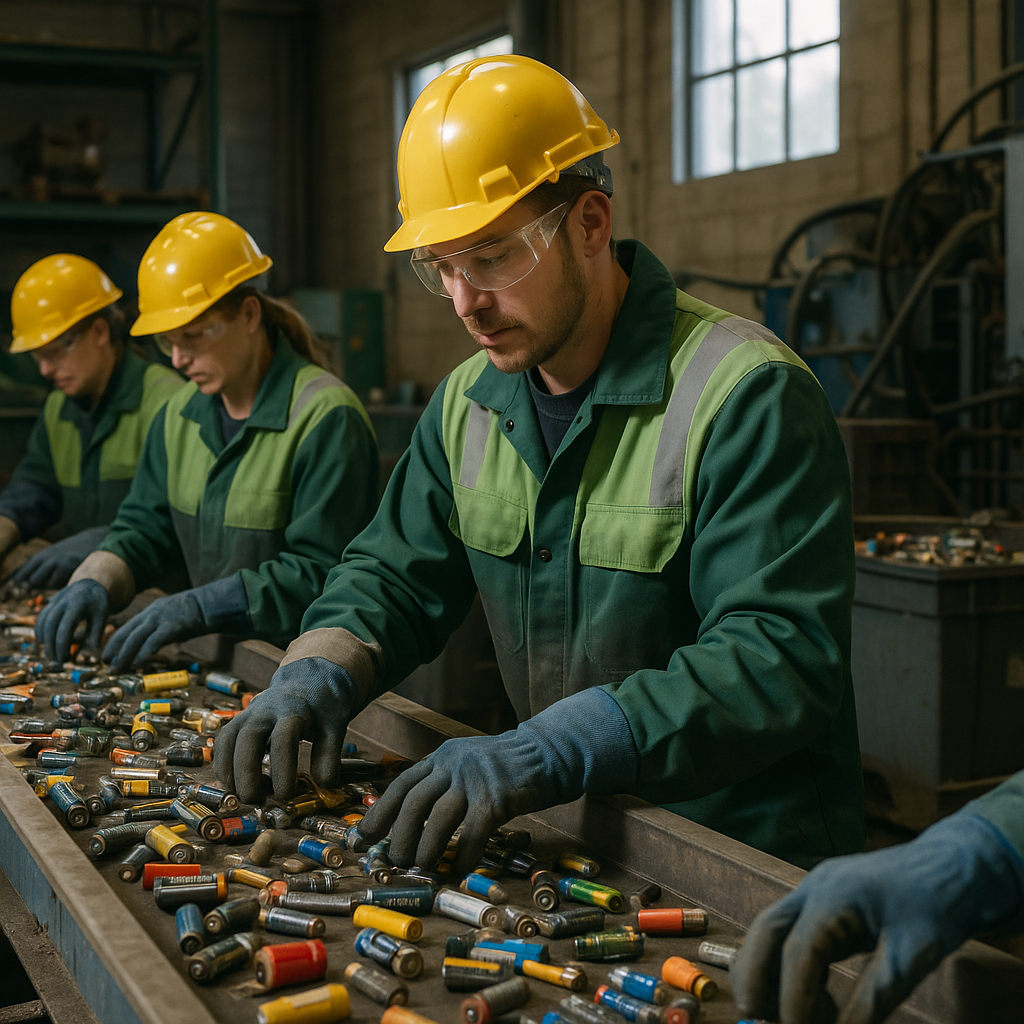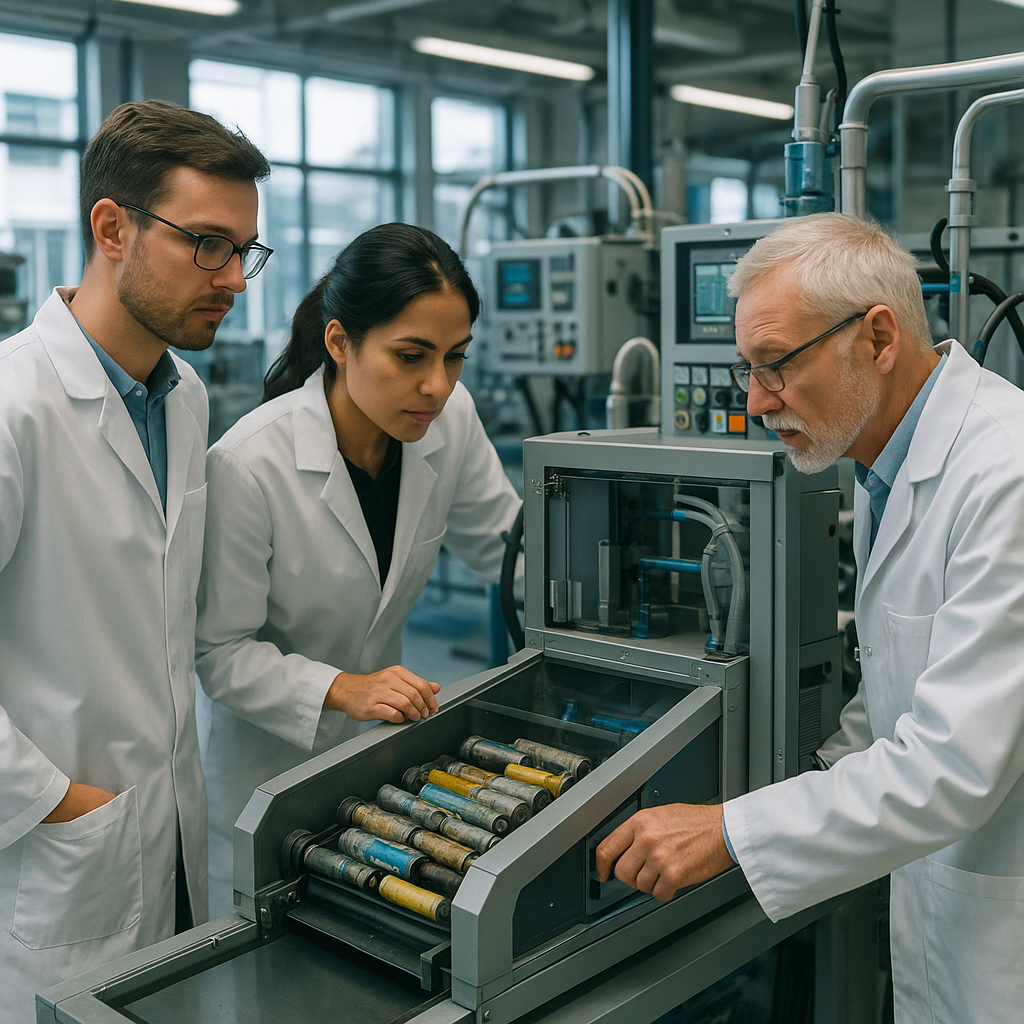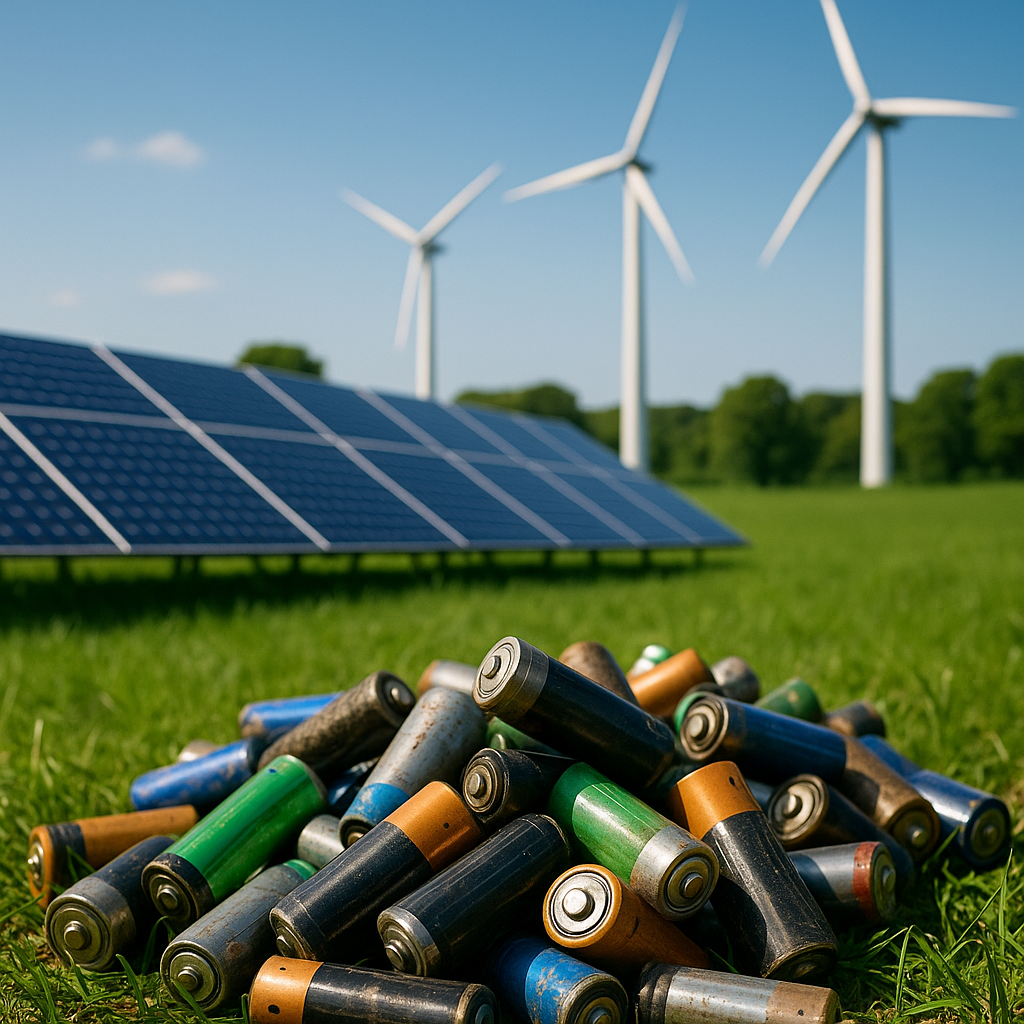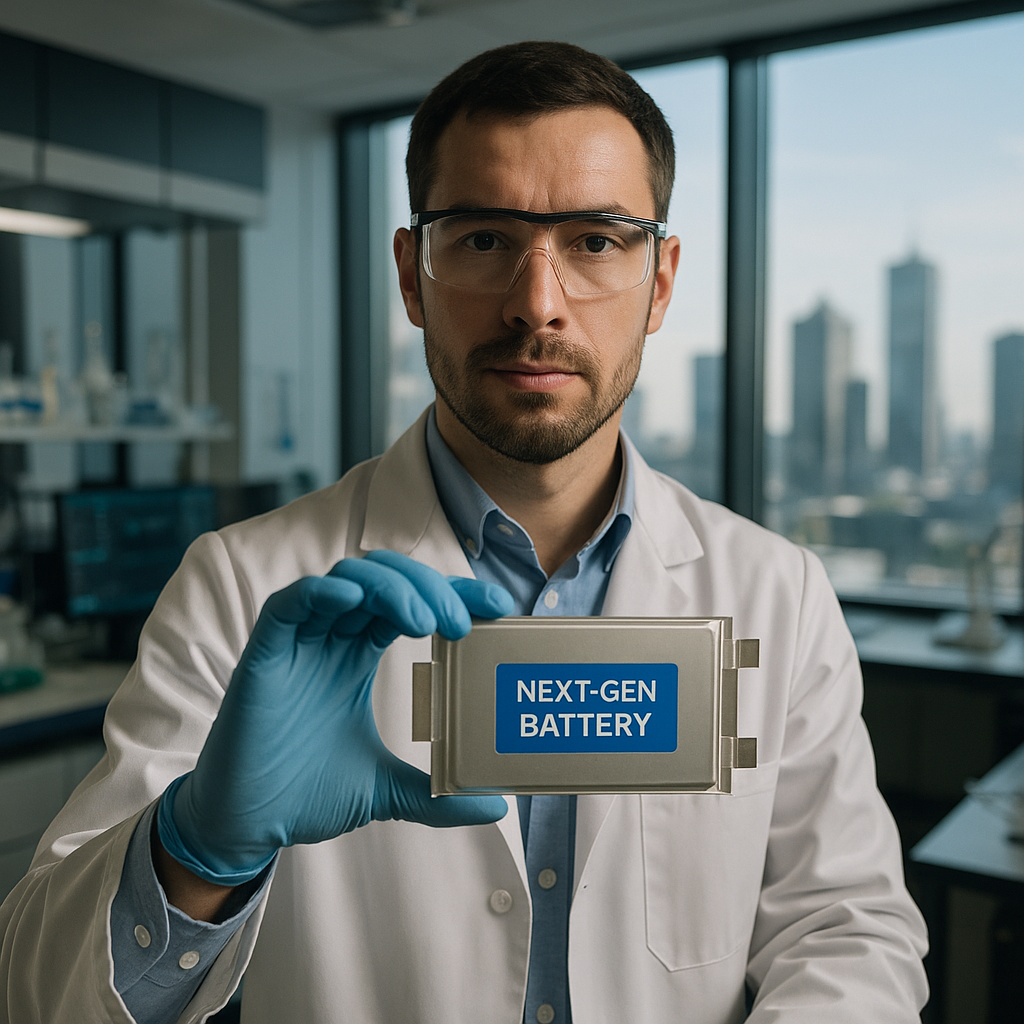5901 Botham Jean Blvd, Dallas, TX 75215
Battery Reclamation: How Advanced Recycling is Powering a Sustainable Future
August 29, 2025Every year, hundreds of millions of devices with lithium-ion batteries are discarded, yet less than 5% of these valuable power sources are recycled. Battery reclamation provides a solution to this growing waste crisis by recovering valuable metals and materials from spent batteries, transforming potential waste into reusable resources.
Battery reclamation functions as an urban mining operation. It extracts critical metals like lithium, cobalt, nickel, and manganese from used batteries, allowing these materials to reenter the supply chain instead of ending up in landfills. These recovered components can then be refined and used to manufacture new batteries without compromising performance or battery life.
As reliance on battery-powered devices and electric vehicles continues to grow, the importance of efficient battery reclamation becomes more urgent. This practice not only conserves valuable resources but also reduces the environmental impact of mining raw materials and enhances domestic supply chain security for these increasingly critical components.
What Are the Traditional Methods of Battery Recycling?

Battery recycling technology has developed along three distinct methods, each focused on recovering valuable materials from used batteries through different scientific approaches.
Hydrometallurgical Recycling
Hydrometallurgical recycling uses chemical leaching processes with acidic solutions to dissolve battery components and selectively extract valuable metals.
The process starts with mechanical preprocessing, where batteries are crushed and sorted. Subsequently, the materials undergo leaching with acids like sulfuric, hydrochloric, or nitric acid. The resulting solution, containing dissolved metals, is separated through precipitation, solvent extraction, or electrowinning.
This method achieves high recovery rates for specific metals and operates at lower temperatures than pyrometallurgical methods, reducing energy use. However, it generates wastewater that requires treatment and involves potentially hazardous chemicals.
Pyrometallurgical Recycling
Pyrometallurgical recycling involves high-temperature thermal treatment, melting battery components in furnaces at temperatures that can exceed 1000°C.
During this process, organic materials such as plastics burn off as fuel, and metals separate into various phases based on density and melting points. This results in an alloy containing valuable metals like cobalt, nickel, and copper, which can be further refined.
This high-temperature method effectively processes mixed battery types with less preprocessing. However, it consumes significant energy, results in the loss of lithium and aluminum to slag, and can generate hazardous air emissions.
Direct Recycling
Direct recycling emphasizes physical separation over chemical transformation to recover battery materials in forms that can be directly reused in new batteries.
The process includes discharging batteries, disassembly, and mechanical separation of components, with active materials undergoing minimal processing to restore their electrochemical properties. This approach maintains the chemical structure of cathode materials.
Direct recycling potentially offers the lowest environmental impact and requires less energy than other methods, preserving more of the original material value. However, it is best suited for sorted, single-chemistry battery streams and may not be effective for heavily degraded batteries.
| Recycling Method | Description | Advantages | Disadvantages | Examples of Recovered Materials |
|---|---|---|---|---|
| Hydrometallurgical Recycling | Uses chemical leaching processes with acidic solutions to dissolve and extract metals. | High recovery rates, operates at lower temperatures. | Generates wastewater, uses hazardous chemicals. | Lithium, cobalt, nickel. |
| Pyrometallurgical Recycling | Involves high-temperature thermal treatments to melt battery components. | Handles mixed battery types, minimal preprocessing required. | High energy consumption, potential hazardous air emissions. | Cobalt, nickel, copper. |
| Direct Recycling | Emphasizes physical separation to recover materials with minimal processing. | Low environmental impact, preserves material value. | Best suited for sorted, single-chemistry streams. | Cathode materials, anode materials. |
Selecting the Appropriate Recycling Method
Choosing between these recycling technologies depends on various factors. Battery chemistry is crucial in determining the most efficient recovery method.
Economic considerations include capital investment, operating costs, and the market value of recovered materials. Environmental factors like energy use, emissions, and waste generation also influence method selection.
Many commercial recycling operations combine elements from multiple approaches, creating hybrid systems that maximize recovery efficiency while minimizing environmental impact.
What Innovations are Improving Battery Reclamation?

The battery recycling industry is transforming with innovative technologies that enhance reclamation processes, making them more efficient, cost-effective, and environmentally sustainable. These breakthroughs address long-standing challenges in battery recycling while recovering more valuable materials than ever before.
BRAWS Technology: Water and CO2 Replace Harsh Chemicals
One of the most promising developments is the Battery Recycling and Water Splitting (BRAWS) technology developed by scientists at the U.S. Department of Energy’s Ames National Laboratory. This groundbreaking approach eliminates the need for harsh chemicals and high temperatures typically required in conventional recycling methods.
BRAWS uses only water and carbon dioxide in its recycling process through a simple yet ingenious method. First, batteries undergo a fast-charging protocol to force additional lithium to build up on the battery anode. After dismantling the battery, the team places the anode (usually made of graphite) in water and adds CO2. This process recovers lithium as lithium carbonate.
The environmental benefits are substantial. Green hydrogen is produced as a byproduct when lithium reacts with water. As researcher Ikenna Nlebedim explains, the lithium’s reactivity “divides the water molecule by stripping the oxygen and produces hydrogen gas, which can be recovered safely and used as a fuel.” The process also consumes carbon dioxide, providing added environmental benefits.
Perhaps most impressively, BRAWS allows for the recovery of nearly all the lithium from the original battery. This represents a significant improvement over conventional recycling methods, which typically recover much smaller percentages of this critical material.
Amino Acid-Assisted Extraction Process
Researchers in China have developed an eco-friendly method using glycine, an amino acid, to extract 99.99% of lithium and significant percentages of other valuable metals (96.8% of nickel, 92.35% of cobalt, and 90.59% of manganese) from spent batteries in just 15 minutes.
Unlike traditional recycling methods, this approach uses a neutral solution environment, eliminating the need for harsh chemicals. The process produces minimal harmful gases, and remarkably, the glycine effluent can be repurposed as fertilizer, creating a truly circular approach to battery recycling.
Evolving Traditional Methods
While newer technologies like BRAWS show great promise, ongoing improvements to traditional recycling methods continue. Hydrometallurgy and pyrometallurgy remain the dominant recycling approaches, with hydrometallurgy having a slight edge in ongoing research and development.
Hydrometallurgy uses chemical dissolution to extract valuable materials from batteries, while pyrometallurgy relies on high-temperature treatment. Hybrid approaches combining these methods are becoming more common to maximize material recovery rates.
Significant research is particularly focused on improving cathode recycling, as cathodes contain the highest value metals like cobalt, nickel, and lithium. Different battery chemistries require specialized recycling approaches, with lithium iron phosphate (LFP) and lithium nickel manganese cobalt oxide (NMC) batteries receiving the most attention due to their widespread use in electric vehicles.
| Recycling Method | Recovery Rate (%) |
|---|---|
| Duesenfeld Process | Up to 98% |
| Pyrometallurgical Recycling | 40 – 60% |
| Hydrometallurgical Recycling | Almost 100% |
| Direct Recycling/Reuse | Up to 100% |
Economic and Environmental Benefits
These innovations are not just technologically impressive but economically advantageous. According to a study by Fraunhofer IWKS, recycling 1 kg of lithium batteries can reduce carbon emissions by 2.7 to 4.6 kg CO₂ equivalent. With the global lithium-ion battery recycling market expected to grow at a compound annual rate of 44.8% from 2024 to 2030, these technologies are positioned to make a significant impact.
The recycling innovations also address critical supply concerns. The International Energy Agency forecasts that under its net zero emissions scenario, global lithium demand will reach 1,431 kilotons by 2040—seven times higher than current production levels. Recycling provides a path to reduce dependence on mining while ensuring adequate supply of these crucial materials.
As the first wave of electric vehicle batteries reaches retirement (growing at a projected 43% annual rate through 2030), these innovations could not be more timely. The technologies being developed today are building a more sustainable, circular economy for the battery industry that benefits both the environment and the bottom line.
What are the Economic and Environmental Benefits of Battery Reclamation?

Battery reclamation offers substantial economic and environmental benefits that go beyond mere waste management. This process fosters a circular economy for battery materials, benefiting both businesses and the planet.
From a financial standpoint, recycling batteries recovers valuable metals, reducing the need for energy-intensive mining. The lithium-ion battery recycling market alone is projected to reach $12.2 billion by 2025, according to Grand View Research, highlighting significant economic opportunities in material recovery and job creation.
Resource Conservation and Cost Reduction
Reclaiming critical materials from used batteries greatly reduces the need to extract virgin resources. Mining for battery components like lithium, cobalt, and nickel often involves significant land disruption, water use, and energy consumption. A lifecycle analysis published in Nature Communications found that recycling lithium-ion batteries generates less than half the greenhouse gas emissions compared to conventional mining and refinement processes.
While conventional hard rock lithium mining may yield higher immediate profits, recycling offers significantly lower environmental costs. Recovering materials creates a more stable, secure supply chain, reducing reliance on geopolitically sensitive mining regions.
Battery recycling uses about one-fourth of the water and energy needed for mining new metals, resulting in tangible cost savings throughout the supply chain.
Job Creation and Economic Growth
The battery recycling industry generates more employment than traditional waste disposal methods. Jobs span various sectors, including collection, transportation, processing, and material recovery. A robust recycling infrastructure requires skilled workers in engineering, chemistry, logistics, and manufacturing.
Moreover, domestically recycled materials reduce dependence on imported raw materials, retaining economic value within local economies. This localization enhances national security by ensuring a steady supply of critical materials without the vulnerabilities of international dependencies.
Environmental Protection Through Proper Disposal
Improper battery disposal poses serious environmental hazards. When batteries end up in landfills, toxic chemicals can leach into soil and groundwater. According to the International Energy Agency, the global stockpile of spent lithium-ion batteries is expected to reach 11 million metric tons by 2030, representing both an environmental challenge and a resource recovery opportunity.
Battery reclamation prevents these toxins from entering ecosystems while reducing the environmental footprint of battery production. Benefits include reductions in greenhouse gas emissions, water use, and land disturbance associated with mining.
Advancing Sustainable Technology
With the growing use of battery-dependent technologies like electric vehicles and renewable energy storage systems, efficient reclamation processes are crucial for sustainable growth. Advanced recycling technologies are improving, with direct recycling innovations potentially reducing operating expenses by 40-50 percent.
These advancements make recycling more economically viable, maximizing the recovery of valuable materials. Research in Nature indicates improvements in recycling technology could cut battery production costs by up to 20 percent, fostering a cycle of sustainability and cost efficiency.
Companies implementing battery recycling programs can reduce waste management costs and liabilities related to improper disposal. Many manufacturers now offer incentives for returning used batteries, benefiting consumers financially while ensuring proper disposal.
The triple-bottom-line approach, which considers environmental, social, and financial performance, shows that battery recycling adds substantial value beyond traditional profit measures. Even with low metal prices, the societal benefits of recycling outweigh the costs.
As battery use continues to grow, especially in electric vehicles and renewable energy systems, establishing robust reclamation infrastructure now will ensure economic and environmental sustainability in the future. The combination of resource conservation, pollution prevention, job creation, and technological innovation makes battery reclamation essential for our transition to more sustainable technologies.
Conclusion: The Future of Battery Reclamation

The transition to electric vehicles presents a crucial opportunity in achieving sustainability. As electric vehicle adoption increases globally, with almost one in five cars sold in 2023 being electric, the demand for battery materials continues to rise. Battery reclamation is central to this transition, offering solutions for both environmental concerns and resource scarcity.
Innovative recycling technologies are transforming a challenging waste problem into a circular resource opportunity. Companies are developing hydrometallurgy processes capable of recovering up to 60% of cobalt, 53% of lithium, and over 50% of other critical minerals from used batteries. These advancements reduce the environmental impact of battery production and decrease dependence on mining operations, which often carry significant social and ecological costs.
If you want to ensure your business or organization is effectively managing battery waste and contributing to this vital circular economy, contact Okon Recycling at 214-717-4083. Our expertise in battery recycling and material recovery can help you implement responsible metal disposal practices that support sustainability and meet regulatory requirements.
